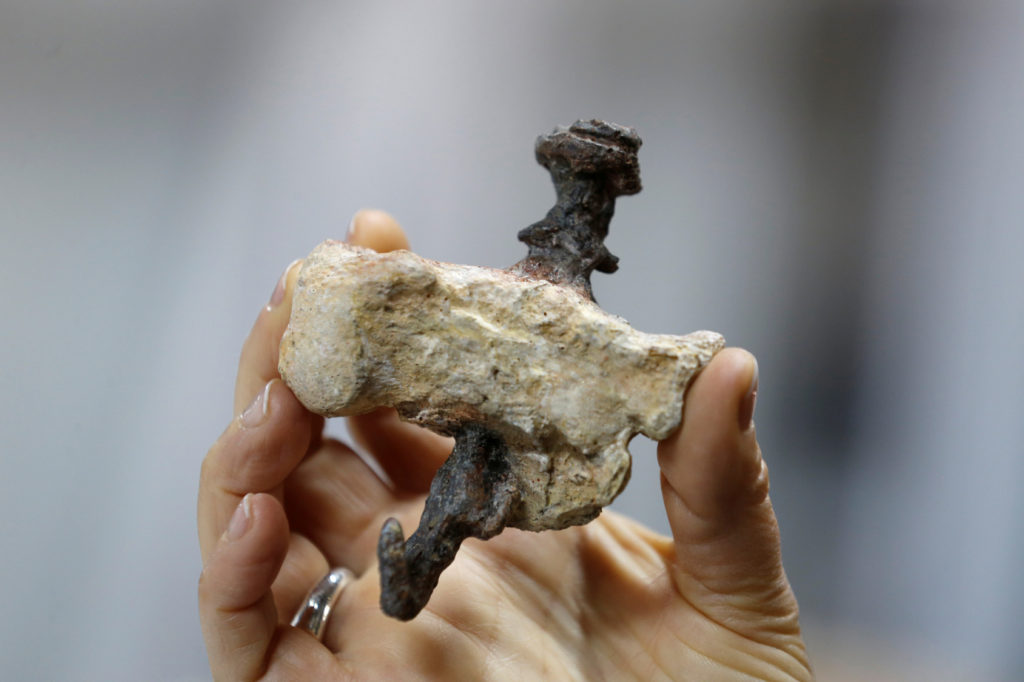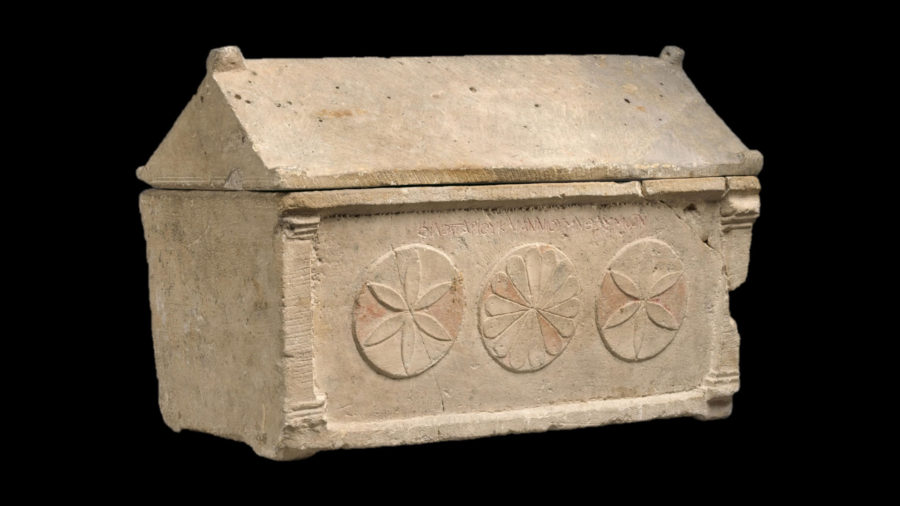The 4 Gospels explains that Joseph of Arimathea, a rich member of the Sanhedrin Jewish court, and a secret follower of Jesus, gave up his for Jesus.
[/vc_column_text]
The Romans could have left him on the cross with his body being decay.
Jesus could have been buried by his faithful followers, but out of nowhere, he was unexpectedly buried by a hostile person, a member of the Jewish court that condemned him to the cross.
Joseph of Arimathea

Joseph of Arimathea is unlikely to be a Christian invention. 1
- Attested in all multiple sources 2
- The name “Joseph” is the most common name among Jewish man at that time 3
- Christians & the Sanhedrin court hated each other. The dispute was so intense that the Jewish leaders were literally blamed to be responsible for Jesus’ crucifixion (Acts 2:23, 36, 4:10). Since both sides refuse to co-operate, it would be very surprising that Christians would invent an antagonist who would take care of Jesus.
Archeology
The burial site of Jesus actually exists. It is believed to be in the Church of the Holy Sepulchre in Jerusalem.
Yehohanan’s ossuary
Some skeptics might deny that a man shall be put into a tomb after their crucifixion.

- bones of a crucified man
- from the period of 20s AD (reign of Pontius Pilate)
- …
“The burial of Jesus in the tomb is ‘one of the earliest and best-attested facts’ about Jesus.” 4
John A. T. Robinson
History
After Jesus died by crucifixion on Mount Golgotha, his body was laid down, prepared and put into a tomb (that belongs to Joseph of Arimathea). Roman guards were there to keep it safe, with a seal and a giant rolling rock.
- mutiple attestions in early independant sources
- historical feasability (Jewish practice & archeology)
- no alternative story exist
Early sources
We have 5 early independent sources for the burial of Jesus.
Matthew 27:60
Mark 14:46
Luke 23:53
John 19:40
1 Corinthians 15:4
The source material of Mark pre-date the Gospel itself. So the content is very early.
The creed cited on 1 Cor 15 (“…that he was buried…”) goes back within months to 3 years. 5.
Jewish burial practices
The story of the burial of Jesus after his crucifixion is unlikely to be an invention because it was a common practice in ancient history.
The Jewish laws demands for dead bodies to be buried before sunset, which is attested in many sources.
- Deuteronomy 21:22-23
- 11Q Temple Scroll 64:7-13
- Josephus’s Jewish War 3.377, 4.317
- Josephus’s Antiquities of the Jews 4.202 & 4.2605
- Philo’s De Specialibus Legibus III 151-152
- b. Sanhedrin 46b
- m Sanh 6:5 (Mishna)
- 4Q491, 4Q285, 4Q251 (Dead Sea scrolls)
That ritual is also put into practice in the Old & New Testament:
- Joshua 8:29
- Joshua 10:26
- 2 Samuel 4:12
- Ezekiel 39:14, 16
- Acts 5:6-10

Jesus’ tomb
Jesus’ tomb was a rock-cut tomb, which typically have these descriptions 10:
- Located outside the walls of the city
- Used by a family over several generations (people are buried with their ancestors)
- Burials were individual inhumations
- Belonged by the wealthier members of Jewish society
The poor people are put into shallow graves, where it almost never survive for archeologists to find. 11
Wait, that doesn’t make any sense: Jesus was a poor carpenter coming from Nazareth!
The 4 Gospels explains that Joseph of Arimathea, a rich member of the Sanhedrin Jewish court, and a secret follower of Jesus, gave up his for Jesus.
The Romans could have left him on the cross with his body being decay.
Jesus could have been buried by his faithful followers, but out of nowhere, he was unexpectedly buried by a hostile person, a member of the Jewish court that condemned him to the cross.
Joseph of Arimathea

Joseph of Arimathea is unlikely to be a Christian invention. 12
- Attested in all multiple sources 13
- The name “Joseph” is the most common name among Jewish man at that time 14
- Christians & the Sanhedrin court hated each other. The dispute was so intense that the Jewish leaders were literally blamed to be responsible for Jesus’ crucifixion (Acts 2:23, 36, 4:10). Since both sides refuse to co-operate, it would be very surprising that Christians would invent an antagonist who would take care of Jesus.
Archeology
The burial site of Jesus actually exists. It is believed to be in the Church of the Holy Sepulchre in Jerusalem.
Yehohanan’s ossuary
Some skeptics might deny that a man shall be put into a tomb after their crucifixion.

- bones of a crucified man
- from the period of 20s AD (reign of Pontius Pilate)
- …
“The burial of Jesus in the tomb is ‘one of the earliest and best-attested facts’ about Jesus.” 15
John A. T. Robinson
- William Lane Craig (2010), “On Guard: Defending Your Faith with Reason and Precision“, David C. Cook, page 224
- Mt 27:57, Mk 15:43, Lk 23:50, Jn 19:38
- Tal Ilan, Lexicon of Jewish Names in Late Antiquity: Palestine 330 BCE – 200 CE (Texts & Studies in Ancient Judaism, 91), 2002
- John A. T. Robinson, “The Human Face of God”, Philadelphia: Westminster, 1973, page 131
- Gerd Lüdemann (1994), “The Resurrection of Jesus” (trans. by Bowden), 171-172
- Exodus 13:19
- Joshua 24:32
- Dan 12:2, Is 26:19
- Craig A. Evans & N.T. Wright (2009), “Jesus the final days: what really happened”, Westminster John Knox Press, page 445
- Jodi Magness, “The Holy Land Revealed”, The Great Courses, Lecture 25: Early Jewish Tombs in Jerusalem
- Bart D. Ehrman, “Did Jesus Exist?: The Historical Argument for Jesus of Nazareth”, HarperOne, 2012, page 194
- William Lane Craig (2010), “On Guard: Defending Your Faith with Reason and Precision“, David C. Cook, page 224
- Mt 27:57, Mk 15:43, Lk 23:50, Jn 19:38
- Tal Ilan, Lexicon of Jewish Names in Late Antiquity: Palestine 330 BCE – 200 CE (Texts & Studies in Ancient Judaism, 91), 2002
- John A. T. Robinson, “The Human Face of God”, Philadelphia: Westminster, 1973, page 131